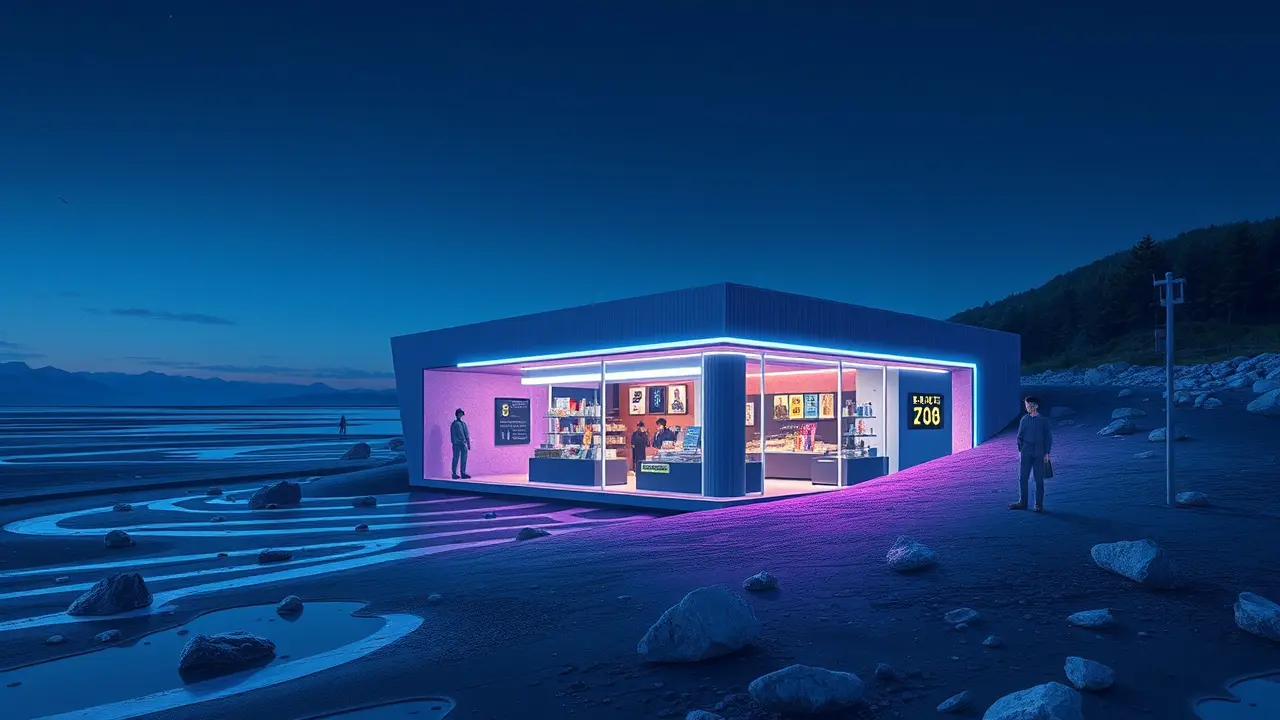
Othertravel & tourismDestinations and Guides
Buried souvenir shop on Japanese shore reflects on tourism and memory.
AN
Andrew Blake
24 hours ago7 min read1 comments
There’s a peculiar structure on the Japanese shoreline near Atami that makes you pause and reconsider the very nature of a souvenir shop. It’s not shouting for your attention; instead, architect Naoshi Kondo has designed it to be half-buried, an act that feels less like construction and more like an archaeological gesture.This isn't just a place to buy trinkets; it's a profound commentary on the relationship between tourism, memory, and the land itself. The building blurs the line between commerce and art installation so thoroughly that you start to question the purpose of such a place.Is it a shop, or is it a monument to the transient nature of travel? The choice to partially submerge the structure speaks volumes. It suggests a desire to belong to the landscape, to not impose upon it but to emerge from it, much like the memories we collect when we travel.These memories are often fragile, half-remembered things, and this building physically embodies that state. It challenges the typical, garish architecture of tourist traps, which are designed for maximum visibility and quick sales.Here, the experience is inverted. You have to seek it out, and in doing so, you engage more deeply with the location.This act of seeking mirrors the way we often have to dig for authentic experiences in a world saturated with curated, surface-level tourism. The context of Japan adds another layer.This is a country with a deep, complex relationship with its land, shaped by seismic activity and a history where nature is both revered and feared. Building into the earth can be seen as an act of humility, a nod to traditional sensibilities that stand in stark contrast to the relentless development seen in many tourist hubs.It also quietly references the concept of *mono no aware*—the poignant awareness of impermanence. The shop, partially hidden, suggests that both the physical structure and the memories it helps create are transient, subject to the elements and the passage of time.What does it mean for a souvenir, an object meant to solidify a memory, to be sold in a place that itself seems ephemeral? It creates a fascinating dissonance. The souvenirs purchased here are no longer just objects; they become artifacts from a specific moment in a specific, almost secret, place.This project forces a broader conversation about the future of tourism. In an era of overtourism and environmental concern, can architecture offer a more respectful, integrated model? Kondo’s work suggests it can.It proposes that the most powerful commercial spaces might be those that don’t scream for attention but instead whisper, inviting a slower, more contemplative form of engagement. It’s a brave rejection of the hyper-visible consumerism that defines so much of our travel experiences. The shop doesn't just sell memories; its very form is a memory, a half-buried thought on the shore, waiting for a traveler to uncover it and complete its meaning.
#architecture
#tourism
#Japan
#souvenir shop
#installation
#land art
#memory
#featured
Stay Informed. Act Smarter.
Get weekly highlights, major headlines, and expert insights — then put your knowledge to work in our live prediction markets.
© 2025 Outpoll Service LTD. All rights reserved.